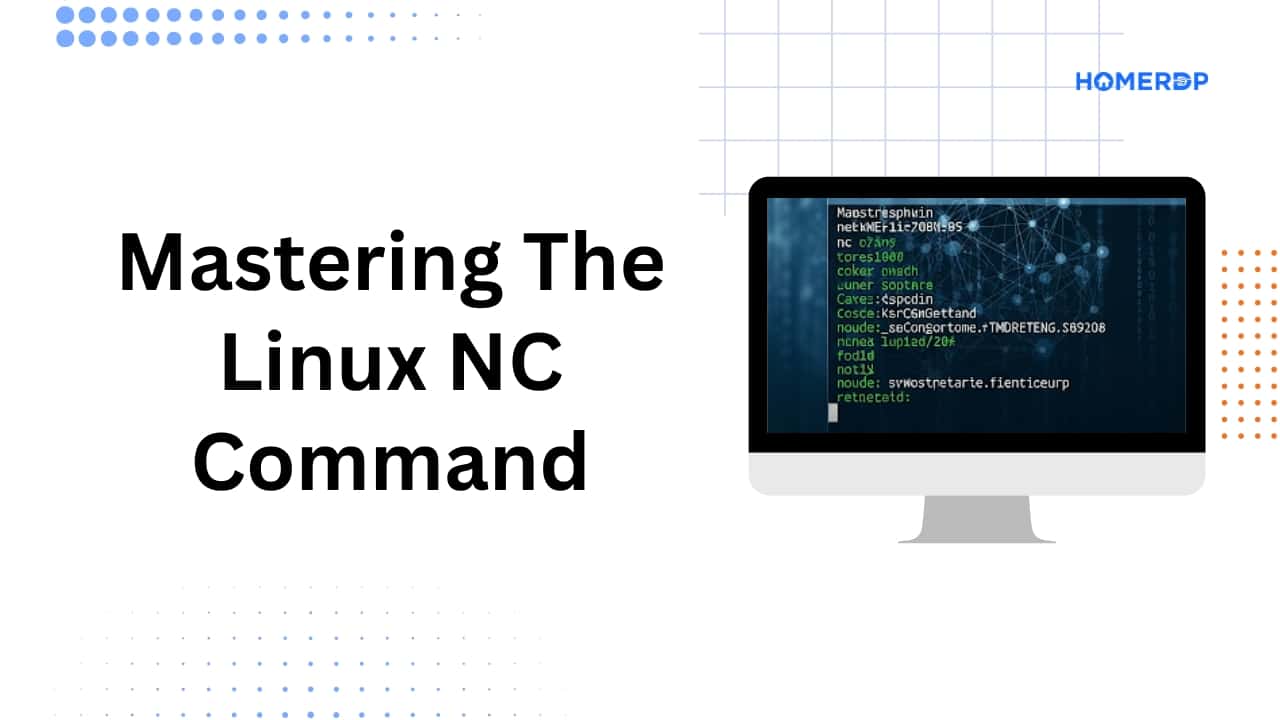Mastering the Linux nc Command: Networking’s Swiss Army Knife with HomeRDP

In the world of networking and system administration, some tools are deceptively simple yet incredibly powerful. The Linux nc command—better known as Netcat—is one of those tools. From debugging connections to transferring files, Netcat is often referred to as the “Swiss Army knife” of networking.
But here’s the catch: while nc shines locally, its true potential unfolds when paired with high-performance remote servers like those offered by HomeRDP. Together, they empower developers, sysadmins, and IT professionals to execute tasks faster, safer, and more efficiently.
In this article, we’ll explore the practical uses of the nc command, real-world examples, and why running these workflows on HomeRDP infrastructure gives you a serious edge.
What Is Netcat (nc)?

Netcat is a command-line utility that reads and writes data across network connections using TCP or UDP. Think of it as a direct way to open sockets, test connections, transfer data, or even host mini servers.
With its versatility, nc is widely used by:
- Network administrators for debugging services
- Developers for testing applications and APIs
- Security professionals for penetration testing and port scanning
- Students and learners experimenting with networking basics
The best part? Netcat is lightweight, pre-installed on most Linux distributions, and easy to use.
Core Features of the nc Command
Here are the most common and practical capabilities of Netcat:
- Port Scanning
nc -zv target_ip 1-1000Scan a range of ports to see which ones are open.
- Connecting to TCP/UDP Services
nc example.com 80Test connections to servers, APIs, or services directly.
- Listening on Ports (server mode)
nc -l -p 1234Open a port and wait for incoming connections.
- File Transfers
On sender:cat file.txt | nc receiver_ip 1234On receiver:
nc -l -p 1234 > file.txt - Creating a Simple Chat
One machine listens:nc -l -p 4444Another connects:
nc server_ip 4444 - Serving Web Requests
printf "GET / HTTP/1.1\r\nHost: example.com\r\n\r\n" | nc example.com 80Send raw HTTP requests for quick debugging.
These features make Netcat indispensable for anyone working in networking. But when combined with remote RDP and VPS environments, the benefits multiply.
Why Use Netcat with HomeRDP?
While Netcat is powerful, it’s only as good as the environment it runs in. Running nc commands on your laptop limits bandwidth, stability, and reach. That’s where HomeRDP’s servers come into play.
HomeRDP provides fast, secure, and scalable RDP and VPS hosting with full administrator access. By running Netcat tasks on HomeRDP, you unlock:
- High-speed file transfers – Use
ncto move large datasets, logs, or backups between servers with HomeRDP’s high-bandwidth connections. - Low-latency diagnostics – Test application servers and databases hosted globally.
- Sandboxed environments – Run Netcat in isolated VPS/RDP instances without risking your local machine.
- 24/7 availability – Keep monitoring scripts or port listeners running reliably on HomeRDP’s infrastructure.
In short, HomeRDP provides the robust backend while nc gives you the nimble command-line toolset.
Real-World Use Cases:
nc+ HomeRDP in Action
Let’s explore practical scenarios where combining Netcat with HomeRDP creates real value:
1. Remote Port Testing and Debugging
Running nc -zv on a HomeRDP VPS lets you scan external services from a neutral IP. This is invaluable when testing firewalls, load balancers, or geo-restricted applications.
- Example: Test if port 3306 (MySQL) is open on a remote server without using heavyweight tools.
- Benefit: Quick, lightweight, and reliable testing across multiple global HomeRDP servers.
2. File and Directory Transfers
Need to move a dataset between environments? Use Netcat over a HomeRDP server:
tar -czf - project/ | nc remote_ip 4444
nc -l -p 4444 | tar xzvf -
HomeRDP’s NVMe storage and unlimited bandwidth options ensure smooth transfers without interruptions.
3. Hosting Lightweight Services
With Netcat, you can create an ad-hoc web server or chat system on a HomeRDP instance. This is perfect for quick demonstrations, lab testing, or internal collaboration.
For instance:
while true; do nc -l -p 8080 < index.html; done
Pair this with a HomeRDP server, and you instantly have a testable endpoint accessible worldwide.
4. Automated Monitoring
Netcat scripts can be scheduled via cron on a HomeRDP VPS to regularly check service availability. For example:
for port in 22 80 443; do
nc -zv myapp.server $port || echo "Port $port is down"
done
This ensures round-the-clock monitoring, leveraging HomeRDP’s uptime guarantee.
5. Safe Penetration Testing
Security professionals often use nc for reconnaissance. By using an isolated HomeRDP VPS, you avoid exposing your local machine to risks.
- Benefit: Test responsibly in a controlled sandbox.
- HomeRDP’s full root/admin access means you can install additional tools alongside Netcat.
Security Considerations
While Netcat is powerful, it’s not encrypted by default. Best practices include:
- Running it in isolated environments (like HomeRDP VPS).
- Using firewalls to restrict access.
- Avoiding exposure to public networks unless necessary.
- Combining
ncwith secure protocols like SSH for sensitive data.
With HomeRDP, you gain the advantage of firewall management, snapshots, and easy reinstallation, making security easier to maintain.
Why HomeRDP Complements Netcat Perfectly
Here’s a quick breakdown of HomeRDP’s features that supercharge Netcat workflows:
- Global Data Centers – Run Netcat tests from multiple locations.
- Unlimited Bandwidth – Perfect for file transfers and directory syncs.
- Full Admin Access – Install and customize networking tools as you need.
- NVMe Storage + High RAM – Handle heavy workloads smoothly.
- Instant Setup – Get started with Netcat experiments in minutes.
For networking enthusiasts and professionals alike, HomeRDP provides the ideal playground and production-ready environment for leveraging Netcat’s full potential.
Conclusion
The Linux nc command is more than just a networking utility—it’s a multipurpose tool that enables port scanning, debugging, file transfers, and lightweight services with minimal effort. But when you run these tasks on HomeRDP’s RDP and VPS servers, you unlock speed, scalability, and reliability.
Whether you’re a sysadmin troubleshooting connections, a developer transferring project files, or a security analyst performing safe scans, the combination of nc + HomeRDP equips you with unparalleled flexibility.
👉 Ready to take your networking skills to the next level? Explore HomeRDP’s powerful VPS and RDP plans today and supercharge your workflows with Netcat.
EXPLORE MORE ; Mastering the cd Command in Linux
READ OUR BLOGS

